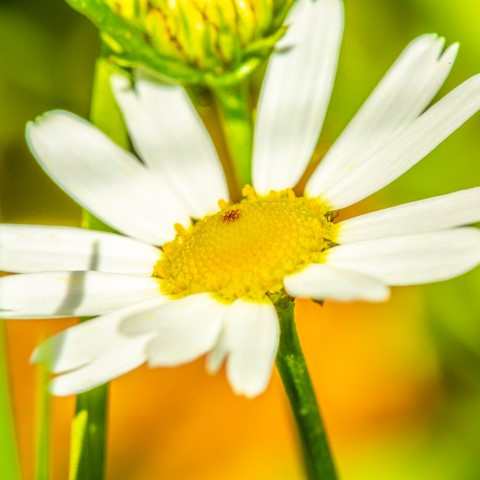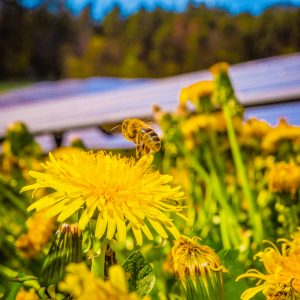 Ever since the “Save the bees” initiative in Germany, we have known how important it is to protect the bees. Solar parks also have an important role to play here. They do much more than just generate environmentally-friendly electricity. They also offer the basic conditions for beekeepers to keep their bees in solar parks with a diverse vivid flora. IBC SOLAR employee and amateur beekeeper Rudolf Tranziska also uses this option. He started his hobby eight years ago. He currently looks after his many bees with his grandson Mika and tells us why solar parks and bees are a real dream team.
Ever since the “Save the bees” initiative in Germany, we have known how important it is to protect the bees. Solar parks also have an important role to play here. They do much more than just generate environmentally-friendly electricity. They also offer the basic conditions for beekeepers to keep their bees in solar parks with a diverse vivid flora. IBC SOLAR employee and amateur beekeeper Rudolf Tranziska also uses this option. He started his hobby eight years ago. He currently looks after his many bees with his grandson Mika and tells us why solar parks and bees are a real dream team.
How did it all begin?
It all started in 2011. I had two bee colonies back then. I also gained my first experience for approx. 1 bee year with an experienced beekeeper who had approx. 40 colonies. After a training period in the beekeeping school and passing an examination, I even gradually increased to eight colonies temporarily. But this takes up a lot of time and requires a great deal of work during the summer months. You don’t always have that time. And as I was an amateur beekeeper, I had to scale down again a little.
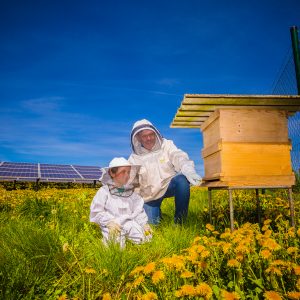
And how many colonies do you currently have?
There are four at present. That is a manageable number. There is a colony of approx. 70-80,000 bees during the summer months.
What breed of bee do the colonies come from?
They are Carnica bees. The Carnica bees are one of the most gentle and industrious breeds and are not likely to sting. This species of bee is also known for producing a large amount of honey during the entire honey yield (blooming period).
When do the bees settle in the solar park?
Shortly before the richest harvesting period. Before the dandelion blooms and the cherries and apples start to blossom. This is towards the end of April or the beginning of May depending on the weather. The bees always have to be placed a little earlier so that they can get used to the location and fly there. As soon as the first rays of sunshine come, that is when the bees get started.
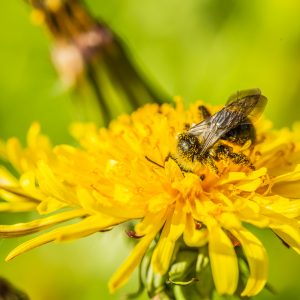
What do you have to bear in mind when choosing a location for bees in the solar park?
It has to be sheltered and the bees should not be exposed to direct sunlight. The lower PV panels are very good for this. The engineers that work in the photovoltaic installations should, of course, be careful here and keep a sufficient distance from the bee colonies. Otherwise, there is a quite a large risk of being stung.
Why are solar parks really well suited for bee colonies?
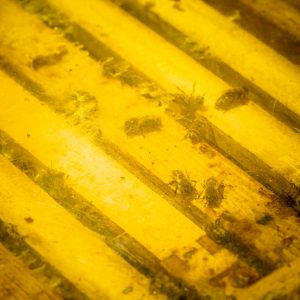
Solar parks guarantee an outstanding natural diversity. This arises automatically as the areas are not used for agriculture. The photovoltaic surfaces and flower meadows are not ploughed, sown or sprayed with plant protection products as is common in the agricultural industry. This enables flora and fauna to develop well and diversely after just a few years. Another factor is that these flower meadows are mowed very late. Bees like this and it benefits them as there is a rich selection of nectar, pollen and honeydew available over an extended period. This was also one of the main reasons why I wanted to use a solar park for beekeeping. It offers ideal conditions for very good and diverse honey that is also uncontaminated and is a pure natural product
Are the operators open to having bees in solar parks?
There aren’t usually any problems here. The beekeeper benefits the most of course. However, for the system operator, it is a flagship for the environmental benefits of its solar park. That’s why many more park operators should offer their surfaces for beekeepers to use.
We can only agree with this. This means solar parks can be used to produce green electricity and protect the flora and fauna. And by the way: The next generation of Tranziska honey is already getting started. Little Mika is already actively helping his grandfather and will one day follow in his footsteps. We at IBC SOLAR regularly consume honey, of course, and look forward to the younger generation also showing a great interest in this trade.
